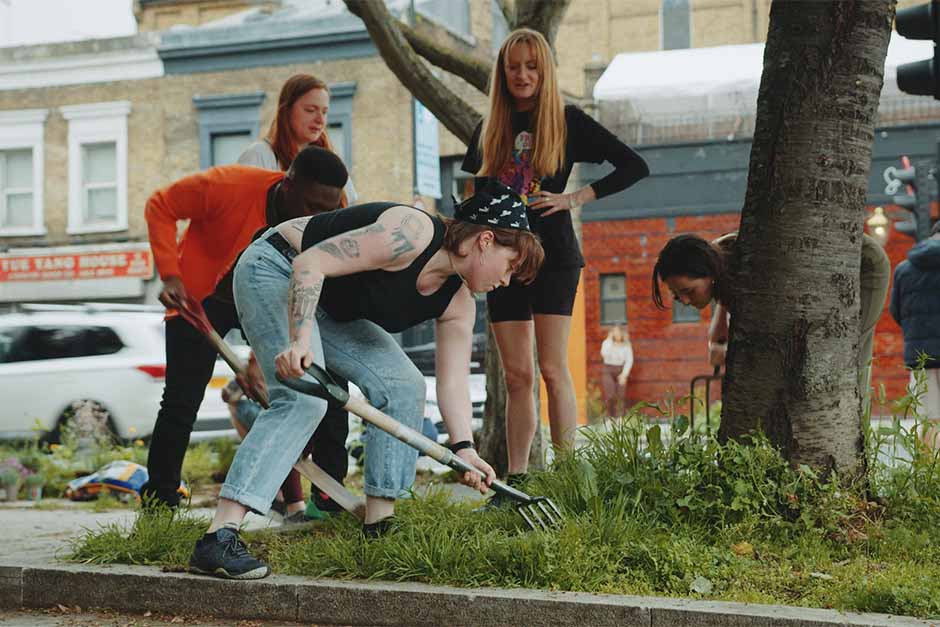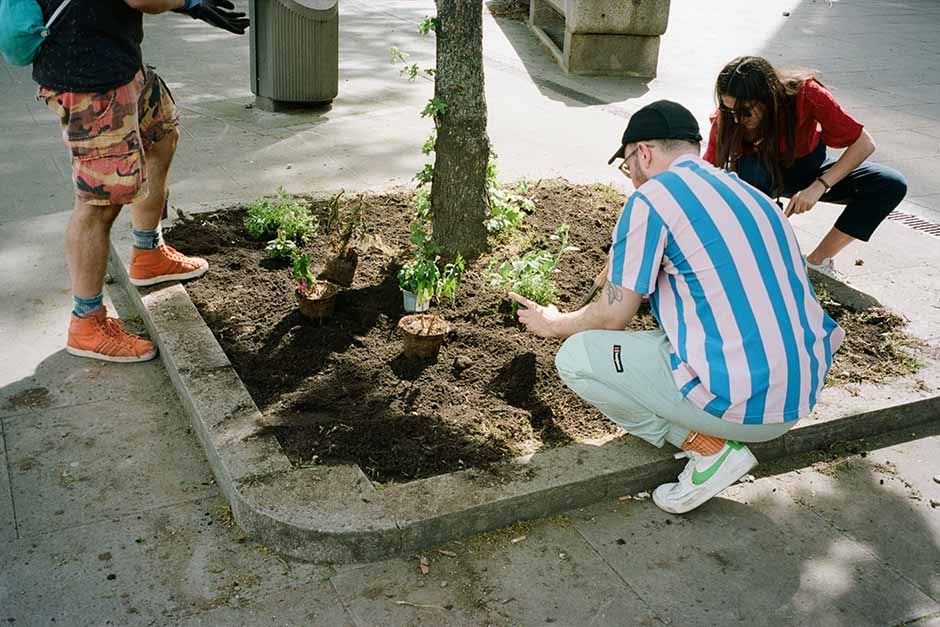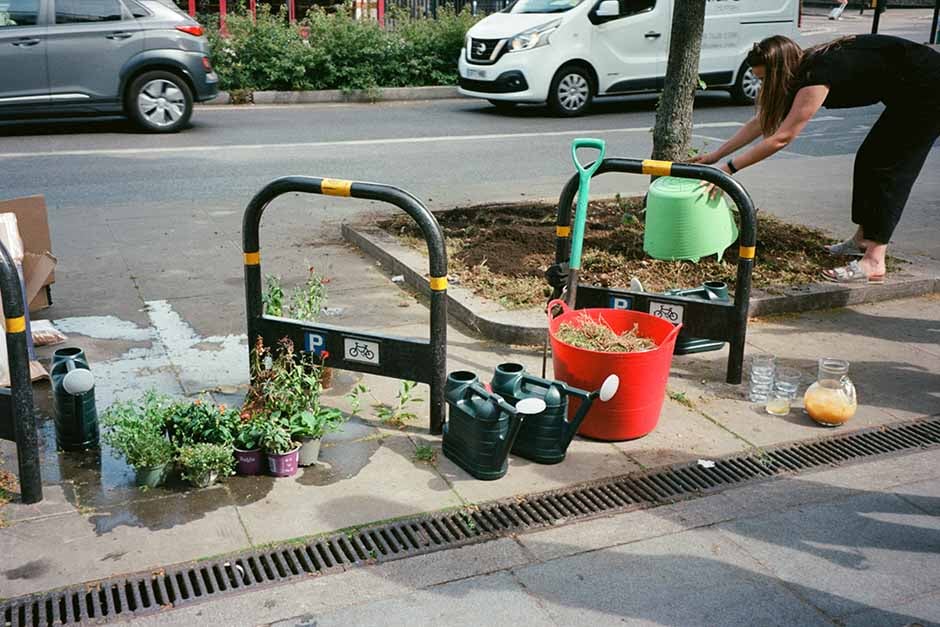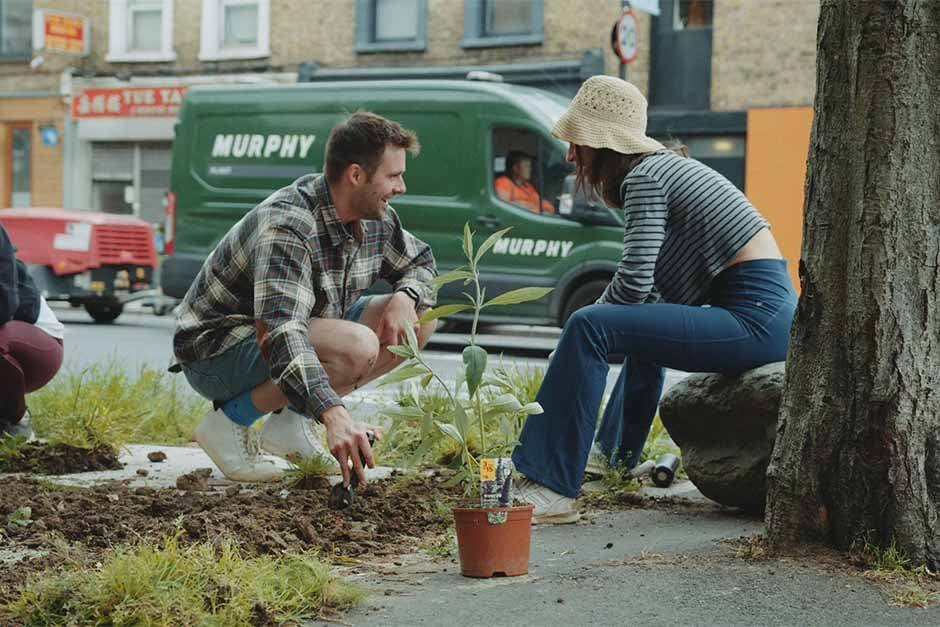Ellen Miles, author of Get Guerrilla Gardening, explains everything you need to know about how to green up your town or city
.jpg)
Anyone can be a guerrilla gardener
Far from being a furtive or hidden activity, guerrilla gardening at its most effective, is a community activity, and should be done visibly to engage and encourage others to join in. With an ethos which lies somewhere between Banksy and Britain in Bloom, the movement is seeing a regeneration as people increasingly live in urban environments, and we become more aware of the challenges of climate change and threats to biodiversity.
Despite its reputation, guerrilla gardening is not just for young anarchists. Parents involve their children so they can learn about gardening, and older residents take part to share their knowledge and experience. The whole community is welcomed and encouraged to take part in reclaiming and improving their home.

Guerrilla gardening and the law
While there are laws regarding trespassing and damaging property, there are no laws pertaining specifically to guerrilla gardening and, as long as it is being done in a public space, generally it comes down to what individual councils will permit. This creates a grey area and there are key issues to be aware of.
- Criminal Damage – Avoid making permanent physical changes. Make anything you build, such as planters, removable and make sure that the roots of what you plant won’t cause any structural damage to buildings or pavements.
- Planting invasive species – Try to plant native species and research banned and invasive species.
- Public endangerment – Make sure that what you are creating doesn’t cause potential harm, eg, trip hazards, restricting access or injury such as splinters. Also remember to check that any plants don’t have potentially toxic properties.
- Public Nuisance – Make sure that your activities don’t cause upset or inconvenience to others. Keep the noise and disruption to a minimum when you are building and maintaining your space, and always be aware of access, so that you do not block prams or wheelchairs for example.
The history of guerrilla gardening
As a concept, it’s not possible to accurately trace the origins of guerrilla gardening. Travelling and displaced communities have cultivated areas wherever they have had the opportunity for food and sustenance. Prisoners and slaves have created gardens in captivity, often to reclaim some autonomy and as link to their homeland.
Guerrilla gardening is often politically motivated, and social movements in the USA in the 1960s & 70s saw locals reclaim abandoned urban plots and turn them into community gardens. Projects such as People’s Park in California and Liz Christie’s ‘Green Guerillas’ in New York, from where the phrase ‘guerrilla gardening’ originated.
“Concrete already outweighs every tree bush and shrub on earth, and more of it is poured out every minute.”
– Ellen Miles, author of Get Guerrilla Gardening
In the UK, what could be described as guerrilla gardening historically was done by groups of agrarian socialists, such as the Diggers in the 17th century, in response to the taking of common land by the aristocracy . Despite resistance from the council, in 1999 residents in Manchester took over a patch of land in between flats in Leaf Street to establish a community garden. More recently, following the devastating Grenfell fire, Tayshan Hayden-Smith galvanised the community into creating the Grenfell Garden of Peace in response.

Why, where and how to get started
In her book Get Guerrilla Gardening, Ellen Miles gives comprehensive advice on how to reclaim urban spaces, including her seven pillars of guerrilla gardening.
1. Purpose
Are you inspired by political or social justice? Do you want to do something proactive to help combat climate change or increase biodiversity? Is it an opportunity for you to meet new people, engage with the community and to gain a sense of belonging to your local area? Are you a keen gardener, with no garden space of your own? Or are you fed up of seeing run-down abandoned spaces in your local area, and want to do something about it?
Ellen says, knowing what you’re hoping to get out of it from the outset, will help you to get the most impact out of your project.
2. Place
When you start to look, you’ll find there are many possible areas for greening around every town and city. Some already have soil, such as tree beds or grass verges, while others may need containers adding. Either way, Ellen Miles suggests that the two golden rules are that the site should be neglected and near.
“If you pick somewhere further than a minute away, it’s going to be harder for you to get all your kit there, you’re not going to walk past it as often. Where I guerrilla garden is about 40 seconds away, sometimes even that feels too far”
-Ellen Miles
There’s no point spending time and effort on an area that isn’t a problem, and given that you will need to transport water, materials and carry out maintenance – it’s best if you aren’t straying too far from home. Existing planters that have been neglected are a good place to start, and remember that vertical gardening provides extra growing space, that won’t cause access problems to passers by.
3. People
While it’s possible to be carry out some guerrilla gardening on your own, by involving others you will increase your resources, gain experience and advice and share the workload. Also, by involving the local community, any projects are more likely to be welcomed and looked after. You could join an existing local group or start your own. Social media and leafleting your local area is a good way to get support. While you are gardening in public, people will often ask what you are doing, and engaging with them is a good way to make sure that the community understand what you are doing and feel they are involved – this can also prevent vandalism.
Community resources:
Find community support groups
Community composting help and advice
Guerilla gardening London

4. Plan
Start by establishing what you already have – identify any existing plants and establish any areas used by wildlife that you’ll want to leave undisturbed. Assess the conditions – is the area in shade or exposed? Does it get flooded and what type of soil is there? When picking plants, you will want to consider all these factors, but as you may only have donated plants to choose from, you will need to be flexible and accept that not all will thrive and may need to be replaced at a later date.
Beside plants, you may also want to consider what other elements you may want to introduce to the area to encourage wildlife or to create a place where the community can meet, grow food and garden together.
Extra elements to consider
- Bug hotel
- Compost bin
- Fences
- Paths
- Planters
- Seating/tables
- Book exchange
- Play equipment
- Security
- Water collection
- Art
- Signage

5. Parts
Guerrilla gardening is done by volunteers with little or no funding. It’s worth asking companies if they could donate or sponsor goods, otherwise, groups rely on borrowing and fundraising. To get plants for free, ask on social media and local gardening group forums to see if anyone could spare excess seeds, seedlings or plants. Seeds can be harvested from gardens and kitchen scraps and mature plants can be divided or propagated to boost stocks.
RHS advice
Budget-friendly gardening
Seed collecting and storing
Dividing plants
Grafting ornamental plants and fruit trees
Understanding soil types
Urban garden plants
Find out if there’s a local tool lending library and recycling groups that donate waste materials you could use, such as timber, pallets and paint. Also get creative about what could be used as a container. If it can hold compost and has drainage, then it can house a plant.
6. Planting
Once you have found your spot, made a plan and gathered people, plants and equipment – it’s time to actually create your guerrilla garden. Make sure everyone knows what their job will be and how to do it. Guides and advice on every garden task can be found on the RHS website.
Wear hi-vis vests and be ready to engage with anyone who asks what you are doing in an open, friendly manner – maybe take leaflets to spread the guerrilla gardening message and recruit new members. Make the experience fun for everyone, with refreshments and music to keep spirits up.
7. Protect
Establishing the guerrilla garden is not the end of the project. In order that the space doesn’t become another neglected area, it will need to be looked after. Plants may need protection from animals, passers-by or the weather. They will need regular watering, checking for disease, cutting back, filling gaps and maybe even harvesting. Establish an after-care rota and remember to regularly return to enjoy what you and your community have created.
Books
Get Guerrilla Gardening: A Handbook for Planting in Public Places By Ellen Miles
Nature Is A Human Right: Why We’re Fighting for Green in a Grey World By Ellen Miles
The Digger Movement in the Days of the Commonwealth by Lewis H Berens
You might also be interested in...

